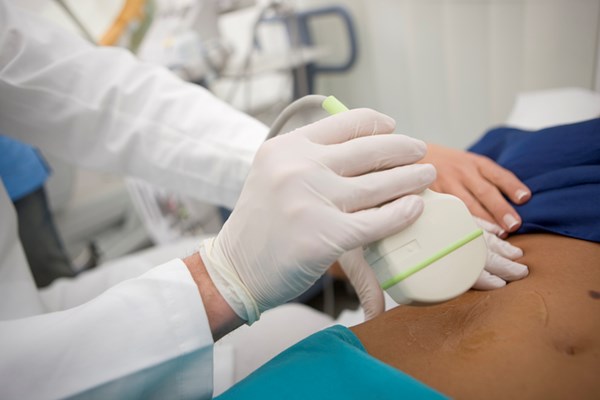By incorporating ultrasound into the first-year curriculum, not only are medical students able to learn a technique that augments their anatomical knowledge, they are also able to contribute meaningfully to better patient flow, decrease costs, and assist with patient management.
Medical education has been evolving since the days of Sir William Osler, a founder of Johns Hopkins Hospital and initiator of the residency training concept in medicine. While the overall goal of developing quality physicians has stayed the same since then, medical students have become increasingly focused on board exam scores and clinical evaluations rather than learning the “practice of medicine.”
At the same time, burnout among students has increased substantially while clinical hours have decreased. This phenomenon is also seen among surgical residents, for whom a decrease in working hours does not seem to lower levels of burnout.1 What is the reason for this? I believe it's a lack of purpose felt by medical students. This is something we need to change. The question is: How do we incorporate the modern medical student as an essential member of the treatment team in an era of increased liability while bolstering that student’s education?
One answer can be found in the field of ultrasound. A landmark article on student-performed point-of-care ultrasound (SP-POCUS) published in 2017 found that students who had received integrated ultrasound training during a single year of their medical school curriculum altered attending physician management of a patient in the emergency department in 17.3% of scans performed.2 The prospective observational study by Daniel Udrea and colleagues at Loma Linda University School of Medicine also found an average of 94.7% physician agreement with the SP-POCUS diagnosis. In addition, attending physicians avoided ordering additional imaging for more than half of the SP-POCUS scans performed. So not only did students perform a high-quality ultrasound that assisted in the diagnosis and treatment of patients, they did so in a way that potentially decreased the overall cost of care.
This study demonstrates the profound effect the next generation of medical students can have upon patient care. By incorporating ultrasound into their first year curriculum, not only were students able to learn a technique that augments their anatomical knowledge, they were also able to utilize these skills in the ED to increase patient flow, decrease costs, and assist with patient management.
So how do we justify implementing ultrasound training into medical schools when so many are already “accelerating” their curricula? The answer lies in how current students learn best. The next generation of medical students will not absorb information in the same way as prior generations; the modern medical student tends to rely on technology and learns well through tactile and interactive experiences, rather than lecture-based classes. By teaching ultrasound in a module-based format that can be spread over the course of a year and offering clinical experiences that will carry forward if the student chooses, medical schools will encourage student participation. While the didactics of medical school are extremely important, providing ample and early clinical experience has shown immense benefits.3 By giving students the opportunity to practice medicine as first-year students, we allow them to discover increased motivation for their studies while combating the monotonous grind that can characterize the pre-clinical years.
POCUS has been growing since the 1970s due to the advent of newer ultrasound modalities and technologies. It is now a staple of many medical specialties but it has yet to make a significant impact at the student level. I firmly believe that by introducing this skill into first-year curricula across the nation, we can revolutionize medical student education. This will allow students to play more important roles in the treatment team and will give them greater purpose in medical school. It will also allow them to combat personal burnout while changing the landscape, and cost, of care.
References
1. Gelfand DV. Effect of the 80-Hour Workweek on Resident Burnout. Arch Surg. 2004;139(9):933.
2. Udrea DS, Sumnicht A, Lo D, et al. Effects of Student-Performed Point-of-Care Ultrasound on Physician Diagnosis and Management of Patients in the Emergency Department. J Emerg Med. 2017;53(1):102-109.
3. Lie D, Boker J, Gutierrez D, Prislin M. What do medical students learn from early clinical experiences (ECE)? Med Teach. 2006;28(5):479-482.



